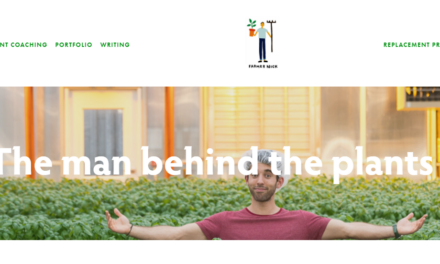Content is the currency of the web—or, at least, relevant content is. Its relevant content that drives people to your site for the first time and to a greater degree persuades them to purchase from your store. (You can read more about relevant content here, here and here.)
Despite the importance accorded to relevant content, websites still gravitate toward generating ambiguous, peripheral content that offers zero–or maybe a morsel of–value to the users. In these cases, the user experience goes for a toss, affecting their leads and conversions, in turn.
To make sure the content running on your site is as per users’ taste and interest, one could apply varied user-testing techniques to know whether it’s being read and interpreted correctly by the users.
Here are four tips to get the most out of your content test via user-testing techniques.
1) Avoid Looking for Focused Groups
Part of the conventional wisdom about website content testing via focused groups is to garner valuable insights. The truth is, it’s random groups rather than focused groups who could help you with fresh insights in terms of whether the existing content will drive sales for your website or not.
Steve Krug, the author of Don’t Make Me Think has cited two good reasons why site owners should look beyond focused groups for user testing. One, even experts are beginners under their skin. Though they may be equipped at dealing with things at a complex level, even they appreciate clarity. Two, complex terminologies may seep into your copy, making your website copy incomprehensible for the starters.
That said, you need to keep the focused audience in mind in two types of cases. First, when you are targeting a particular type of user. Let’s say, the adolescents. In that case, your content needs to be ultra-focused on adolescents. Second, when you are testing defined groups with unique interests and requirements. Let’s say, you are developing an app for the marketing team of a major company. In that case, you will need to get your app tested with a couple of junior marketing employees, senior marketing employees, managers, and more.
2) Avoid Unmoderated Research Studies for Broader Testing
As it turns out, users’ pass judgments on their own in unmoderated research studies. Since facilitators are not around to influence user’s decision, such testings have limited use. Simply put, leverage unmoderated research studies for testing specific elements of the site such as workflow or even snippets of information.
However, if you want to get things tested on a broader scale in terms of how people navigate your website, how they compare offerings, and so on, it’s better to opt for moderated research studies where the facilitators presence is required.
How do facilitators influence the content testing process? Content testing gets boring and dry when users scan pages after pages, for hours and hours together. In fact, there comes a point where the user feels that she is not contributing to the process in an efficient way, and so might slip into an inattentive mode and might as well start scanning the pages superficially, with the only intent of finishing the job as quickly as possible.
This is where facilitators could get a handle on the situation by seeking clarifications from the user and even by asking personalized, follow-up questions. This will ensure that your user testing feedbacks are not run-of-the-mill kinds, but authentic and result-driven.
3) Avoid Close-ended Testing Tasks
If anything, close-ended tasks limit user activity. It provides tighter stats. On the other hand, open-ended tasks offer users the flexibility to explore the site to their heart’s content. This, in turn, could help you better measure the activity of the users on your website in terms of what they research, the queries they have on mind, and whether your site meets the user requirements.
You gain better insights only when users are allowed to search freely on the web. Open-ended tasks allow users to do the same. Even encouraging users to visit competitors’ sites, a part of open-ended tasks, rather than sticking to their own site, could help you glean some revelatory insights.
According to Steve Krug, testing competitive sites that are similar in style, organization, and features is equivalent to someone building a working prototype for you for free, to test and improvize your own website content.
4) Avoid Offering Prepared Scripts to Perform
While conducting traditional usability tests it has been observed that researchers tend to come up with a prepared script, which is then forwarded to research participants to follow. This is not an ideal approach in terms of content testing.
For all we know, one should avoid relying so much on prepared scripts, rather engage with the participant directly to check out whether the participant is comfortable performing such-and-such a task. Sure enough, it’s always nice to prepare a general task-sheet before the study, but then one should be ready to make changes to suit participant’s needs.
To gather better insights it’s important for the participants to act freely rather than according to s prescribed format that binds their imagination and thought-process.
Summing Up
Usability testing, in terms of content testing, works only when you look beyond focused groups and choose different types of users. This will ensure that your content is understandable by all and sundry, not just the experts. Further, users should be given enough time to explore your website and other competitive websites as well. This will help gain better insights in terms of how to improvise the content and attract valid results.
Content is the key asset of any company. Indeed, having a competitive product is equally important. But a product can do only so much. Generating relevant content that is iterated often through various user-testing techniques is what could give your site an edge over your competitors.






